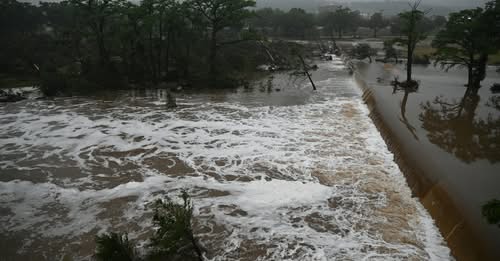
Recent weeks have seen devastating flash floods wreak havoc across multiple states, serving as a stark reminder of the unpredictable and extreme danger these natural disasters pose. From the tragic events in Texas and New Mexico to the heavy impacts in North Carolina, communities are grappling with immense loss and the critical importance of being prepared.
The Deluge Across the States
Just days apart, areas in the U.S. have faced what authorities are calling catastrophic flooding events:
- Texas Hill Country: The region has experienced historic and deadly flash floods, particularly around the Guadalupe River. Fast-moving waters on July 4th swept away homes, vehicles, and tragically, claimed over 100 lives, with more than 160 people still reported missing in Kerr County alone. Search and rescue operations have been complicated by renewed rainfall, underscoring the ongoing threat. Communities like Kerrville and Hunt saw rivers swell by more than 20 feet in less than an hour, catching many off guard.
- Ruidoso, New Mexico: This mountain village, already scarred by recent wildfires, was hit by intense monsoon rains. The Rio Ruidoso surged dramatically, rising over 20 feet in just 30 minutes, sweeping away homes, stranding residents, and leading to multiple fatalities. The burn scars from previous fires significantly exacerbated the flooding, as the parched ground was unable to absorb the sudden deluge.
- North Carolina: The remnants of Tropical Storm Chantal brought torrential rain and historic flooding to parts of central North Carolina, including Chapel Hill. This led to numerous water rescues, widespread road closures, and at least four fatalities. The Eno and Haw Rivers crested at record or near-record levels, inundating businesses and homes and displacing dozens of people.
The Extreme Danger of Flash Floods
These recent events underscore why flash floods are considered among the most dangerous natural disasters:
- Suddenness and Speed: Flash floods develop incredibly fast, often with little to no warning. What might seem like a small creek can turn into a raging, 10-foot-deep river in minutes.
- Overwhelming Force: Just six inches of fast-moving water can knock an adult off their feet, and two feet can sweep away a car. The water carries immense force, capable of demolishing buildings and carrying large debris like boulders and entire houses, as seen tragically in New Mexico.
- Hidden Hazards: Floodwaters can conceal downed power lines, sharp debris, and contaminated water, posing severe risks of electrocution, injury, and illness. Roads and bridges can be compromised or washed out, making escape treacherous.
- Nighttime Threat: Many flash floods occur at night, when visibility is limited and people are often asleep, adding to the danger and making timely evacuation extremely difficult.
The Urgent Need for Preparedness
Given the increasing frequency and intensity of extreme weather events, being prepared for flash floods is not just advisable—it’s essential.
- Know Your Risk: Understand if your home or work is in a flood-prone area, a floodplain, or near streams and rivers. Be aware that areas affected by wildfires are particularly vulnerable to flash flooding due to altered landscapes.
- Stay Informed: Monitor local weather alerts from reliable sources like NOAA Weather Radio or local news. Heed Flash Flood Watches (flooding is possible) and Flash Flood Warnings (flooding is happening or imminent).
- Develop a Family Emergency Plan: Discuss with your family what to do, where to go (identify higher ground), and how to communicate if a flood occurs. Have multiple ways to receive alerts, and ensure all essential electronics are charged.
- Assemble an Emergency Kit: Include water, non-perishable food, a first-aid kit, flashlights, batteries, a power bank, important documents, and any necessary medications.
- “Turn Around, Don’t Drown!”: This critical mantra could save your life. Never walk or drive through flooded roads. It’s impossible to tell the depth of the water or the condition of the road beneath it. Most flood-related deaths occur when people attempt to drive or walk through floodwaters.
- Prepare Your Home: If you live in a high-risk area, consider elevating crucial utilities, installing check valves, or constructing barriers if feasible.
- Evacuate Immediately if Instructed: If advised to evacuate, do so without delay. Do not wait for conditions to worsen.
The devastation witnessed recently in Texas, New Mexico, and North Carolina serves as a powerful testament to the destructive power of flash floods. While we can’t stop these natural phenomena, we can significantly reduce their impact by understanding the risks and taking proactive steps to prepare ourselves and our communities.
Has your community experienced extreme weather recently? How are you preparing for future events?


